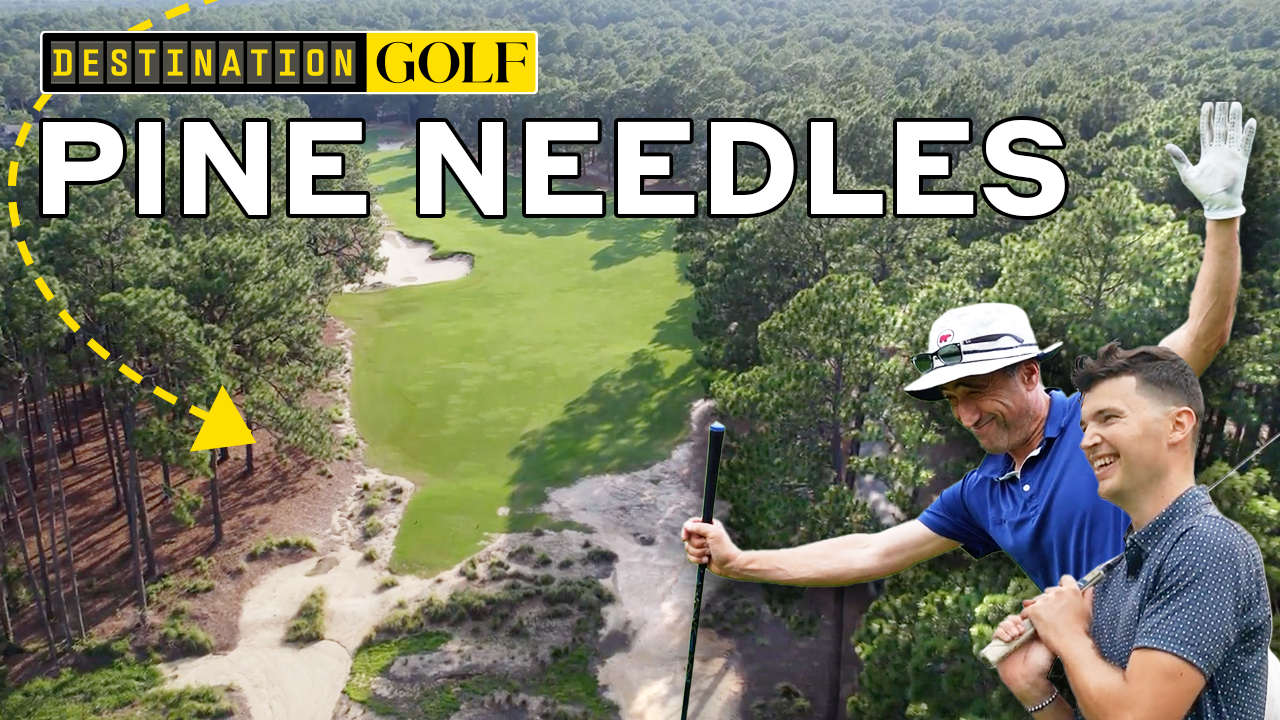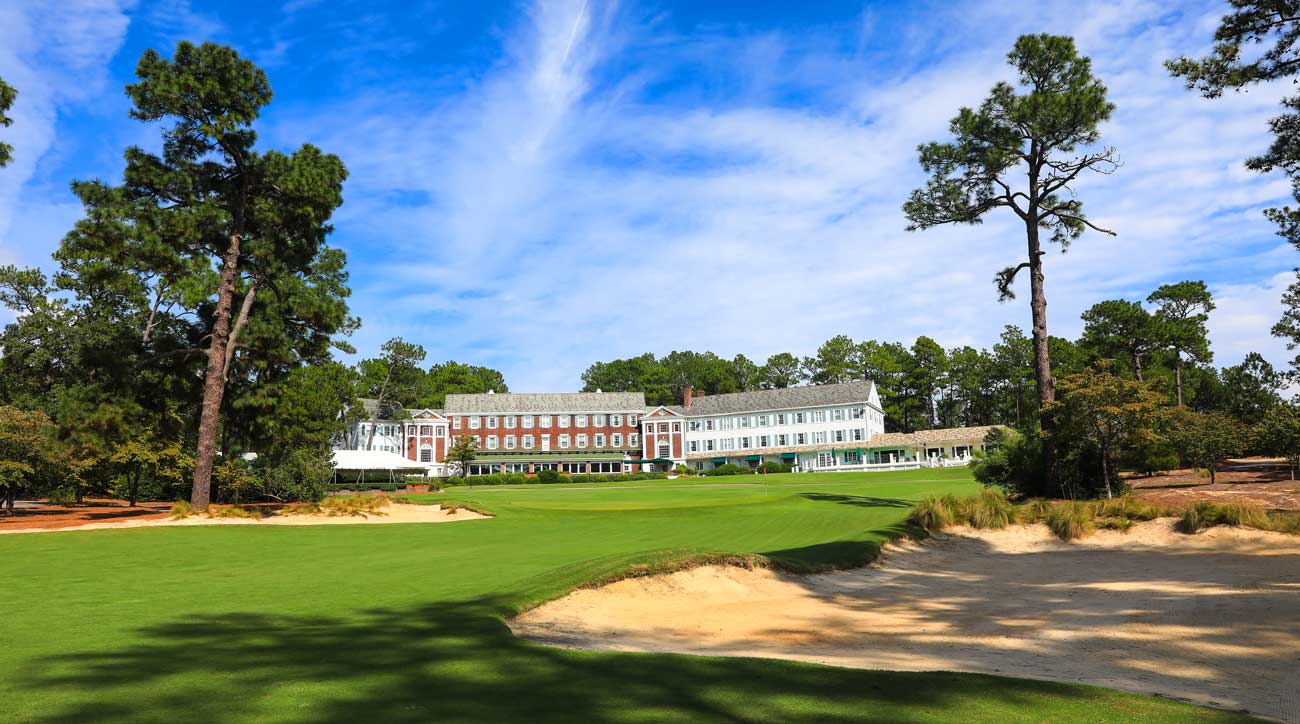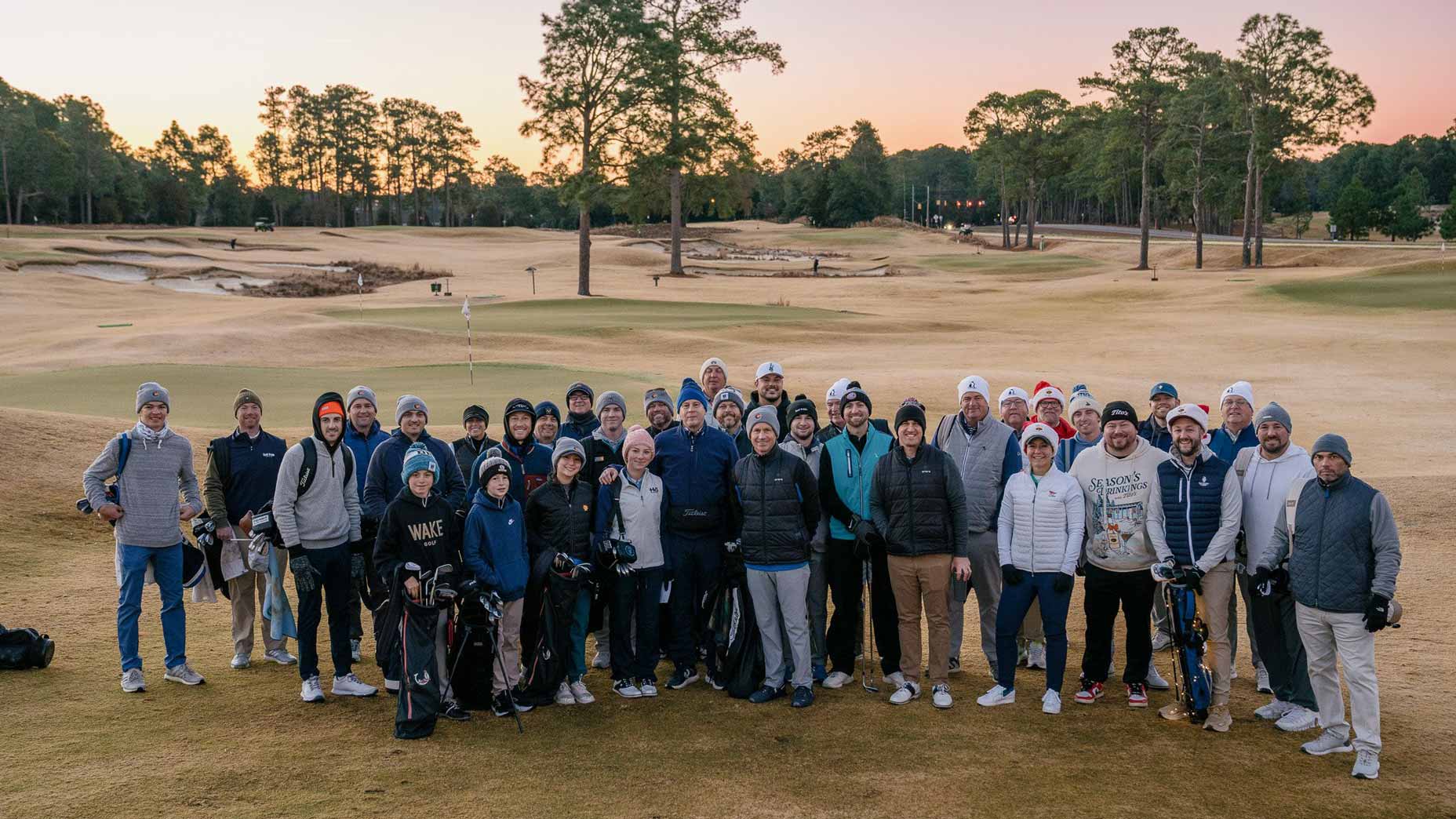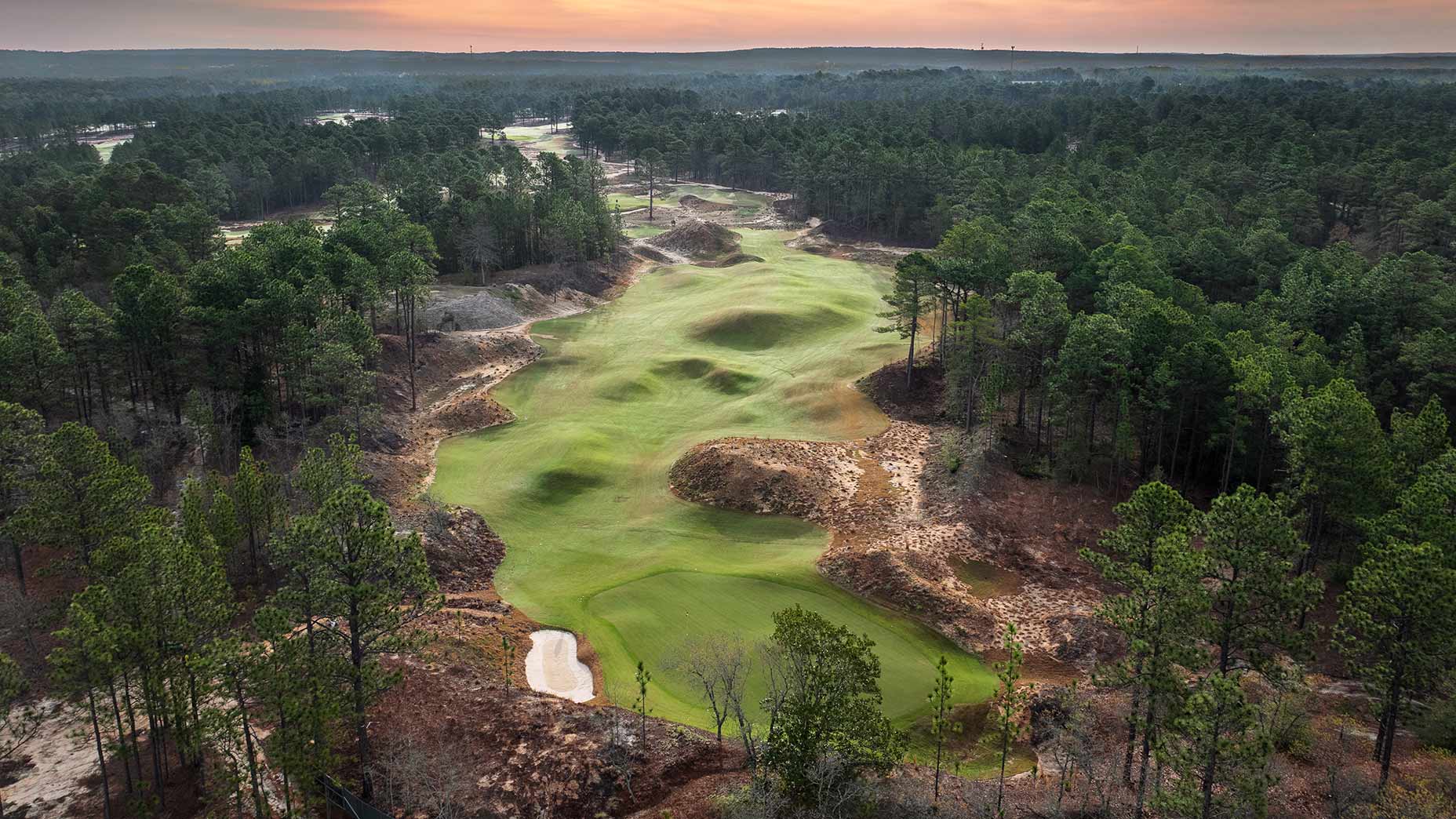In the rapidly expanding world of destination golf, one area qualifies as a bonafide American classic: Pinehurst.
The “Home of American Golf” has become one of the epicenters of the golf travel world in the years since the pandemic — a fact only aided by an all-time U.S. Open in June to kick off an expanded partnership between the region, the USGA, and the new World Golf Hall of Fame.
Even as Pinehurst No. 2 basked in Bryson and Rory’s historic spotlight, a groundswell of epic golf was bubbling to the surface just outside the resort gates. In August, as Pinehurst’s red-hot summer reached a sweltering point, GOLF editors James Colgan and Josh Sens visited the region to find “everything else” — the great golf that ISN’T No. 2, the cool spots that not enough tourists visit, and yes, even a local-favorite Martini (or three). They were joined for part of their trip by longtime local resident – and GOLF architecture editor, Ran Morrissett–who doubled as a tour guide.
This is the first part in that series, beginning with a conversation on the area’s other legendary major championship host: Pine Needles.
Josh Sens, GOLF senior writer: On the morning of our first round in the Pinehurst area, we showed up at Pine Needles in pouring rain. It had been dumping for hours. But then the skies cleared, and 20 minutes later, we went out on a course that was amazingly dry, given how much rain had fallen. I guess they don’t call this area the Sandhills for nothing, eh?
James Colgan, GOLF news and features editor: As someone who once worked on golf courses in the northeast, I found it mindblowing to see a golf course go from underwater to fully playable in the time it took to sip a cup of coffee. This is the reason why every golf course designer from here to Australia is chasing that precious sandy soil. We were hoping to see what makes the Sandhills stand out, and we got a glimpse before we hit our opening tee shot.
But once the golf got started — it was really good. Even after the rain, Pine Needles showed us plenty of teeth as, behind Pinehurst No. 2, the area’s preeminent “championship” test. I’ll admit, Josh, that I’m not the best person to articulate the differences in golf course details. Maybe we should call in our pal Ran.
Ran Morrissett, GOLF architecture editor: A fun fact about Pine Needles not every golfer knows is that it used to be part of Pinehurst Resort. It was one of several courses Ross built outside the village of Pinehurst, along with Southern Pines and Mid Pines. Pine Needles opened in late 1928, which was poor timing for sure. The Great Depression took a heavy toll on the area, and one year later, both Pine Needles and its neighbor, Mid-Pines, were sold to take financial strain of Pinehurst Resort. Pine Needles was later purchased by Warren and Peggy Kirk Bell. The latter was one of the founders of the LPGA Tour. She also knew Donald Ross. Pine Needles has been under the care of the Bell family ever since.
Sens: That seems only fitting. It’s also interesting that you bring up the connection with Pinehurst Resort, because I think when most golfers picture a Donald Ross course, they picture Pinehurst No. 2, with its famous turtleback greens. Ross built that course on pretty sedate land, and so it made sense to defend the course with those pushed-up putting surfaces. At Pine Needles, I think it’s fair to say he had more dramatic topography. And so he took a different approach.
Morrissett: Ross knew how to work on all kinds of terrain, and he made great use of the land’s natural movement at Pine Needles. A peculiarity of the course is how many times the high point of the hole falls in its midsection. Plenty of Ross courses feature an elevated tee, a lower fairway and an uphill approach. Here, the golfer drives uphill at holes 1, 4, 6, 7, and 12, ideally carrying the crest of the hill and enjoying a scoot forward with his/her tee ball. Conversely, if you can’t quite carry the hillcrest, your tee ball deadens into the upslope and the course plays much longer than the scorecard suggests. Complementing those 5 holes, you have holes like the 2nd and 18th that play steadily downhill and others like 4 that charge uphill. The hardest of the bunch might be the 17th, which, surprisingly, is also the course’s flattest hole. Bottom line: It’s the variety of ways that the holes hit the land that make Pine Needles a standout test for both driving and approach shots. No wonder the USGA has deemed it the perfect host site for the US Women’s Open, which has been there four times recently, in 1995, 2001, 2007, and 2022.
Colgan: I’m glad you bring that up, Ran, because I actually came to Pine Needles for the Women’s Open in ‘22, and I was *blown away* by the quality of the golf course during that week. It’s way more psychedelic than the layout at No. 2, and because of that, there’s less sense that EVERYTHING comes down to the crispiness of the greens.
In a lot of ways, when the tees are set up properly to challenge the length of the course, it’s more diverse than No. 2 as a major test.
What made this one-of-a-kind Pinehurst trip so specialBy: Connor Federico
Sens: That’s part of what makes this area so much fun to check out. You get to try out different flavors of Donald Ross. Of course, not all the golf in and around Pinehurst is Ross. But I can’t think of another part of the world that has such a high concentration of works by a single architect.
Colgan: The different properties also have different feels to them. If you think of Pinehurst as golf Disney World, then Pine Needles is summer camp. The vibe is old, musty and laid back — you can practically hear Centerfield by John Fogerty through the trees. The courses reflect it, too.
Sens: There’s definitely a throwback air to Pine Needles from the moment you pull up, a rustic time-capsule feel. Like, if Scooby-Doo ever did a golf-themed episode, Pine Needles would be the place where the eccentric innkeeper would greet you at the bag drop.
Colgan: The golf is noticeably distinct, too. As a golf nerd, I view golf trips through the same lens I view food: when I’m in an area, I want to try all the variations of the local cuisine. Under these rules, a good location, then, is something that has more than the same “famous” burger-and-fries at each stop. Each of the Pine Needles courses — Needles, Mid-Pines and Southern Pines — is distinctly (and delectably) its own. (Ironically, though, the burger at the Pine Needles resort might be the best in the entire county.)
Sens: I’m glad we got to do some literal grazing around town during our visit. We’ll get into those stops in the next two videos. Before we wrap up, though, I wanted to pick up on your golf nerd comment, James, because, if you’re a golf nerd, is there a more appropriate place in the U.S.? Everywhere you turn in and around Pinehurst, you bump into some kind of golf-related business. Golf memorabilia shops. Art galleries with golf-y works.. Golf-themed pubs and bars. To punctuate that point, right after our Pine Needles round, we made a quick beeline to GolfPride headquarters and got our putters regripped. After the way I rolled the ball that first round, I know I needed to make a change. I think a lot of visitors must go searching for that kind of curse, because the place was jumping.










